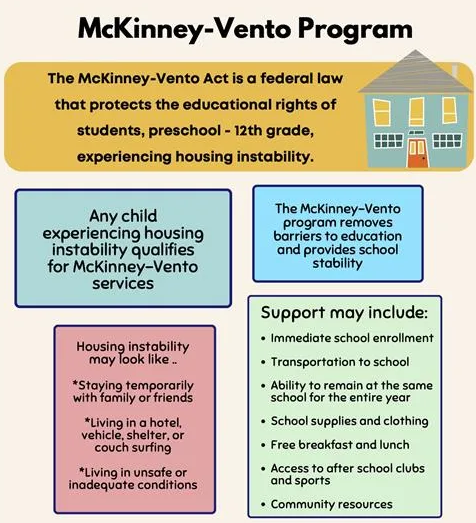Populations experiencing Homelessness
1/13
There's no tags or description
Looks like no tags are added yet.
Name | Mastery | Learn | Test | Matching | Spaced |
|---|
No study sessions yet.
14 Terms
What type of population has experienced the single largest increase in homelessness?
People in families with children
Overall though, number of people experiencing homelessness is increasing
Examples of factors that contribute to homelessness
Poverty
Lack of affordable housing
Lack of affordable healthcare
Lack of employment
Domestic violence
Mental illness
Addiction disorders
Personal/financial crisis
Natural disasters
Personal choice
In 2/3 of people who file for bankruptcy, what is often a key contributor?
Medical issues + lack of affordable health care
What factors may contribute to homelessness specifically in youth and young adults?
Substance misuse
Mental health problems
Foster care
Hx of being in juvenile detention or jail
LGBTQ
Lack of high school diploma/GED
What factor is most highly correlated with increased risk of youth homelessness?
Lack of high school diploma/GED
What law/act provides security/resources for youth experiencing homelessness?
Available to students experiencing housing instability/homelessness
Helps remove some barriers they might face
Federal law → meant to protect the education/wellbeing of students experiencing homelessness
Access to resources that make education more accessible, less difficult, and more equitable

When providing care to those experiencing homeless, the public health nurse needs to do what 3 things in order to provide the best care?
Establish trust
(they’re already vulnerable, likely distrustful of healthcare. PHN needs to establish a trusting relationship)
Self-clarification of beliefs and values about homelessness, poverty, addictions, and mental disorders
(can’t provide good care if you don’t treat your clients with respect)
Comprehensive and holistic approach
(need to treat and consider all aspects. Poor health is multifactorial, and homelessness is complex)
Primary levels of prevention for homelessness
Advocating for affordable housing, employment opportunities, better access to health care
Financial counseling
Assistance in accessing social services, temp housing, health care to avoid a crisis
Health education
Parenting skills, violence prevention, anger management, coping skills, healthy eating, hygiene, immunization
Secondary prevention methods in the context of homelessness
Assessment of client needs for:
Housing, health care, education, social services, employment
Screening for communicable diseases and other health problems
Assessment of barriers to accessing services
Lack of transportation
Tertiary prevention methods in the context of homelessness
Rehabilitative care
Support clients that are already homeless
Treating complications of advanced disease
Case management
Seamless delivery of services as people transition from one level of care to another
“Managing the case”
Advocacy
Development of innovative modes for response to homelessness
Advocate at each level of prevention for positive change
Why do people experiencing homelessness exhibit severe oral health problems?
Poverty
Substance use
Poor nutrition
Coexisting illnesses
Health issues that homeless populations face
Acute health problems
Straightforward. May experience injury, but also increased risk of acute illnesses
Chronic health problems
TB, HIV/AIDS, diabetes, HTN
Addiction and mental disorders
Trauma and criminal victimization
Severe oral health problems
HIGH prevalence of HIV